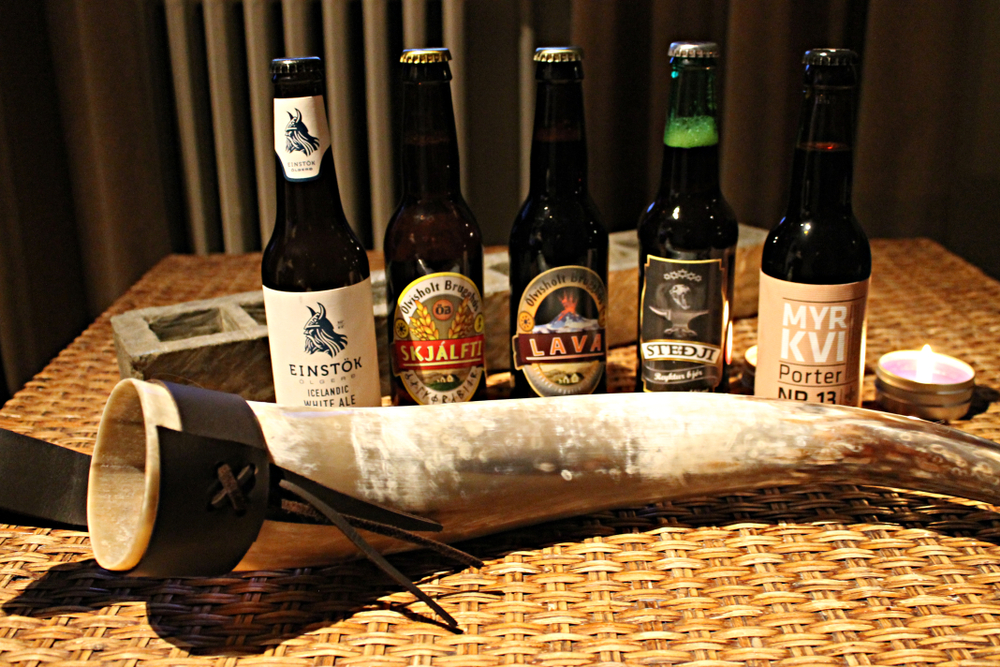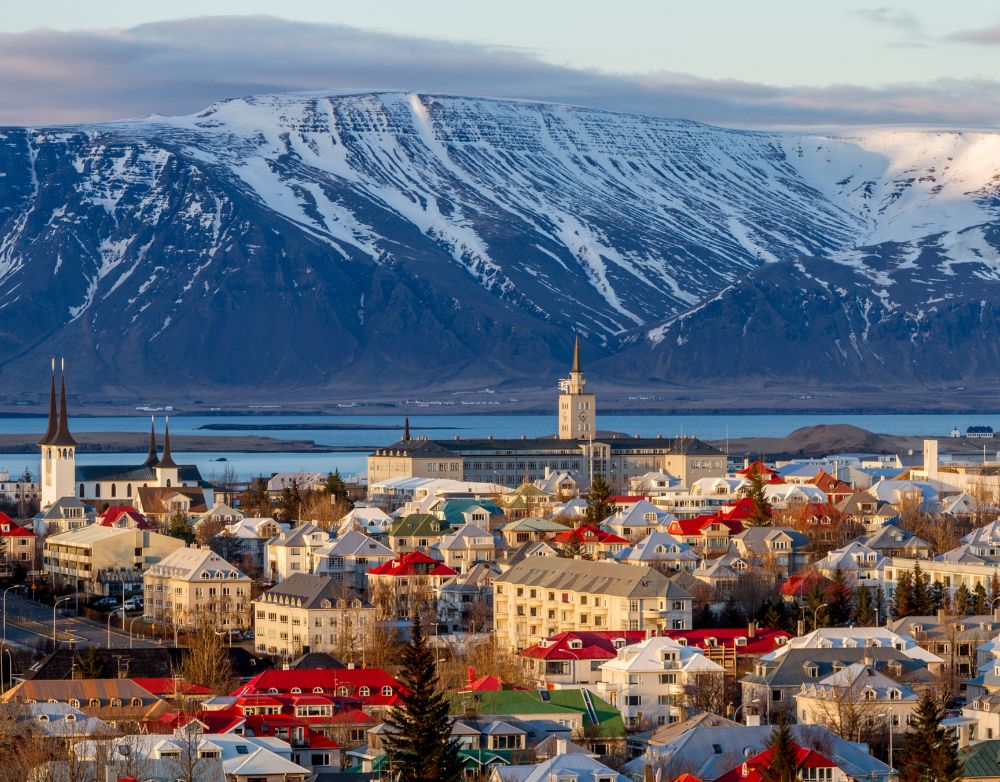Iceland is known as the land of the midnight sun and is synonymous with Vikings and Norse legends, but it is so much more.
Iceland is full of fun things to see and Icelandic people are some of the most welcoming you’ll find anywhere in Europe.
These fun Iceland facts will change how you look at this small but mighty Scandinavian country!
1. Iceland is an Introvert’s Paradise
Iceland is one of the least populated countries on the planet. There are approximately 300,000 people who live in Iceland year-round.
If you aren’t a fan of your fellow man, Iceland is a great place to visit to truly get away from it all.
2. Iceland is Famous for Geysers
Iceland is full of beautiful blue geysers (over 16, in fact).

The word “geysir” is Icelandic in origin and the English word “geyser” comes from an Icelandic hot spring that was called the “Great Geysir”. The literal translation for the word is “the gusher”, and the English language adopted this specific term to refer to all geysers.
3. Iceland is a NATO Country without an Army
While Iceland is part of NATO, it doesn’t have a standing air force, army, or navy.
They do have a coast guard, and a small peacekeeping force of about 200 people called ICRU.
Iceland is one of the safest countries in the world, with a low violent crime rate. Police officers don’t even carry firearms. Take that, ‘Merica!
4. McDonald’s Left Iceland Behind
If you’re hoping to get a Big Mac in Iceland, you’ll have to break into a museum.
The last McDonald’s meal in Iceland was sold in 2009 and encased in glass as a remembrance for the burger chain that just couldn’t survive there due to cost and logistics.
5. You Can Find Freedom in Iceland
Both economically and socially, Iceland always scores well in metrics related to personal freedom.
Iceland is ranked in the top spot on the Global Peace Index, and 11th on the Index of Economical Freedom.
This may be why Icelanders are happier than other people.
6. March 1st is Beer Day in Iceland
Alcohol was prohibited in Iceland from 1908 to 1989. Beer Day celebrates the break in prohibition and is an unofficial national holiday in Iceland. Visitors can join in on pub crawls in Reykjavik on March 1st.

Beer is also currently the most popular beverage in Iceland which is no wonder – after 74 years I’d have to make up for lost time too!
7. The Largest Glacier in Europe is in Iceland
The largest glacier in Europe is called Vatnajökull and it covers 8 percent of Iceland’s landmass. The ice cap is currently 400 meters thick but is melting thanks to global warming.
In fact, all of Iceland’s glaciers combined lose a total of 4 billion tons of ice every year.
8. Icelandic is Difficult for English Speakers to Learn
The Icelandic language is notoriously difficult – a category IV, yet how difficult it is to learn depends on your native language or mother tongue. Icelandic is particularly difficult for English speakers to learn because of the pre-Germanic cases, genders, tenses, and noun sub-classes.
9. Baby Names Need Government Approval
If a baby is born in Iceland and the parents want to give it a name that is not on the government-approved list, it is submitted for approval.
Three Icelandic people are appointed to the Naming Committee each year, which was established in 1991, and they make the decision whether the name is compatible with Icelandic traditions and if the name would cause embarrassment for the child.
10. Iceland is Known as the Land of Fire and Ice
Iceland has been given this name because it is continually transformed by both glaciers and volcanic activity. One can appreciate the geothermal energy of both fire and ice here.
Nowhere is this more apparent than the Mid-Atlantic Rift, which divides Iceland, settling it onto two tectonic plates, the Eurasian plate, and the North American plate. This is the only place on earth above sea-level where you can actually witness the edges of both plates.

Visitors who wish to see this with their own eyes will need to take the Golden Circle circuit which ends at Þingvellir National Park, where this marvel can be witnessed firsthand.
11. Icelanders Love Black Licorice
Black licorice is the favorite candy of Iceland and in most candy shops and stores selling sweets, more than 75 percent of the selection features licorice in some form.
Why do Icelanders love licorice? The edible part of licorice is the bulb and it doesn’t need to flower in order to be consumed.
In a land without bees, growing anything that resembled a carbohydrate was nearly impossible. Licorice was one thing they could count on.
Licorice is 40 to 50 times sweeter than sucralose in its pure form. As such it was used in medicinal forms and in sweets for generations.
The favorite ice cream flavor of Icelanders also happens to be licorice.
12. Icelanders Publish a Lot of Literature
Iceland has more writers per capita than any other nation in the world. Nearly 1 in 10 Icelanders will publish a book in their lifetime.
Writers are respected in Iceland and encouraged to practice storytelling which is inherently an enormous part of Icelandic culture.
13. Iceland is Home of the Blue Lagoon
Geothermal pools are the ultimate way to relax. Warmed by mother earth, the water temperature remains stable even in such a cold, Nordic country.

The Blue Lagoon is the most famous geothermal swimming pool in Iceland and one of the coolest things you can do after a long day of sightseeing.
Geothermal swimming pools reach 29 Celsius or 85 degrees Fahrenheit, so it is a comfortable temperature year-round. Icelanders often socialize while swimming so don’t be surprised if you end up talking with some locals.
14. You Can See the Northern Lights in Iceland
You can’t mention Iceland without talking about the Northern Lights.
The Aurora Borealis is viewable from anywhere in Iceland, though you get a better view the further you are away from city lights.
15. Iceland is Home to Europe’s Most Powerful Waterfall
Many of Iceland’s waterfalls have special features but this list would be remiss without mentioning Dettifoss, Europe’s most powerful waterfall.

The water flowing over the edge of Dettifoss falls at an astonishing rate of 200 cubic meters per second. The sound this waterfall makes is a thundering roar that can be heard from a considerable distance.
The sight of this waterfall is awe-inspiring, and there are two hiking trails that will allow visitors to view it from either side. It is recommended to watch your footing because the 45-meter drop is not forgiving.
16. Iceland has a Penis Museum
One of the weirdest tourist attractions in Iceland is the Icelandic Phallological Museum.
Here, visitors can see specimens of nearly all mammalian penises that can be found in Iceland including whales, polar bears, and Homo Sapien.
They were curated by one family, which also runs the museum.
17. Iceland Has Europe’s Biggest Banana Plantation
Yes, these are real bananas, not penises.
Somehow bananas and Iceland don’t seem like they belong in the same sentence. Yet Iceland is home to Europe’s largest Banana Plantation, in the form of a greenhouse.
The greenhouse is located in Reykir and is run by the Icelandic Agricultural University. While they produce the most bananas in Europe, the harvest still doesn’t amount to much. They produce 500 to 2,000 kilograms of bananas each year.

